Animal competition traditions: Türkiye’s camel wrestling vs. Spain’s bullfighting
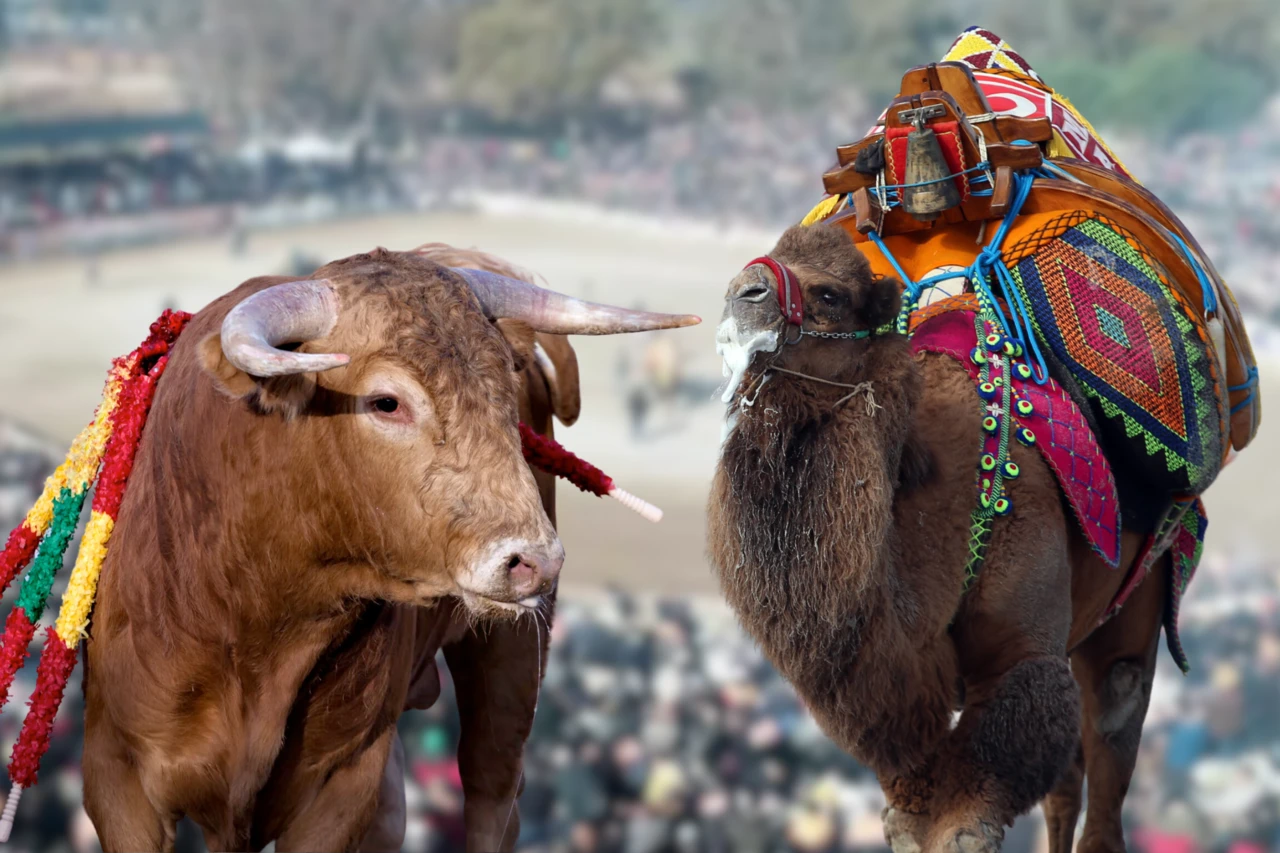 What do camel wrestling in Türkiye and bullfighting in Spain tell us about history, culture, and the evolving animal rights debate? (Created with Canva)
What do camel wrestling in Türkiye and bullfighting in Spain tell us about history, culture, and the evolving animal rights debate? (Created with Canva)
Animal competition traditions, often seen as cultural spectacles, have been practiced across the globe for centuries.
Two such events, camel wrestling in Türkiye and bullfighting in Spain, provide unique insights into the cultural heritage, animal roles, and societal values of their respective regions.
These traditions, though deeply rooted in history, continue to spark debates over their ethical implications and cultural significance in modern society.
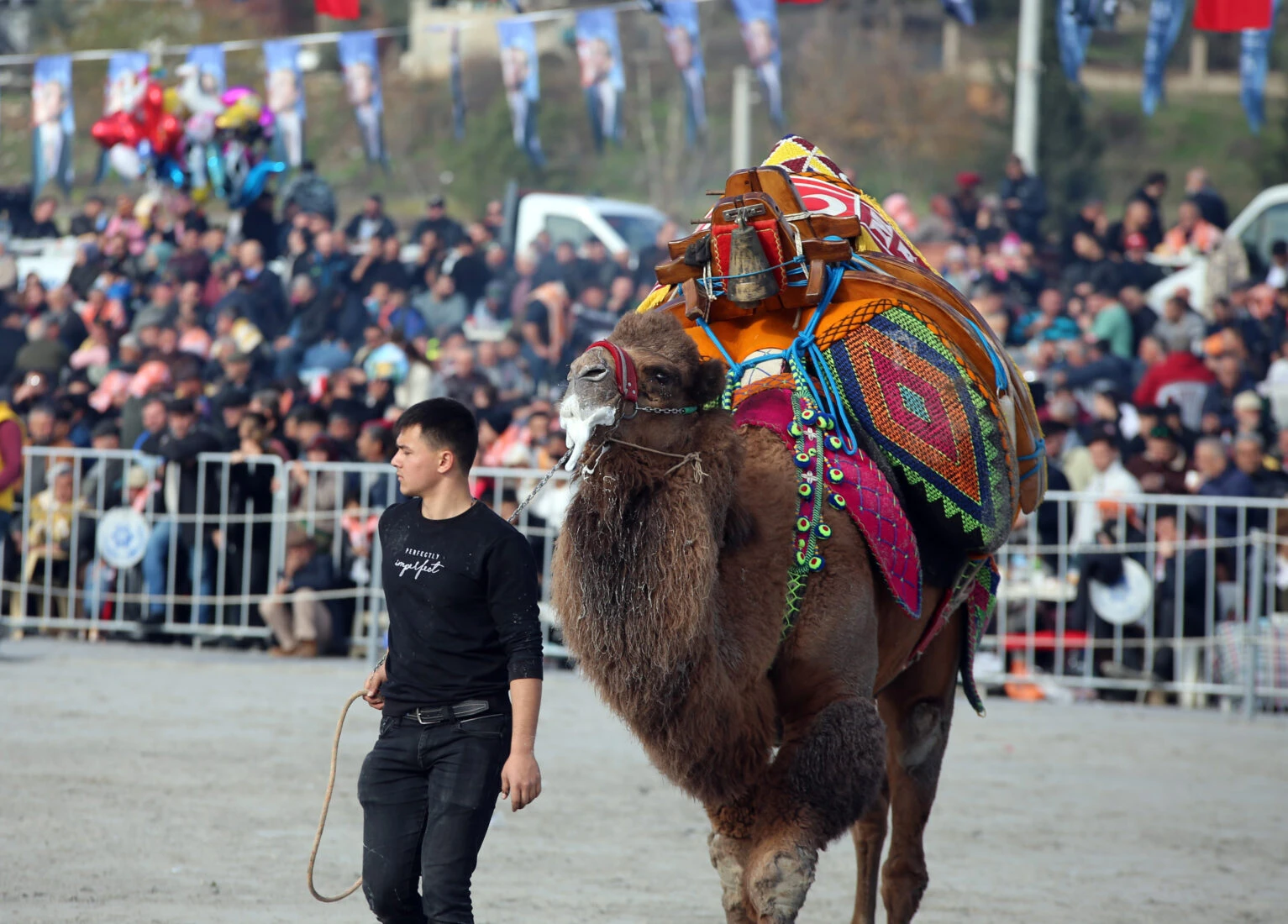
Camel wrestling celebrates community, cultural heritage in Türkiye
Camel wrestling, prevalent in Türkiye’s Aegean and Mediterranean regions, traces its origins back to the nomadic Yoruk communities.
- Historical accounts suggest it began during the Ottoman era, possibly as early as the reign of Sultan Mahmud II, when caravan owners organized competitions among their camels
- However, some evidence points to its earlier presence in Central Asia, with depictions of camel wrestling dating back 4,000 years
This centuries-old tradition remains a source of pride and cultural identity for many Turkish communities.
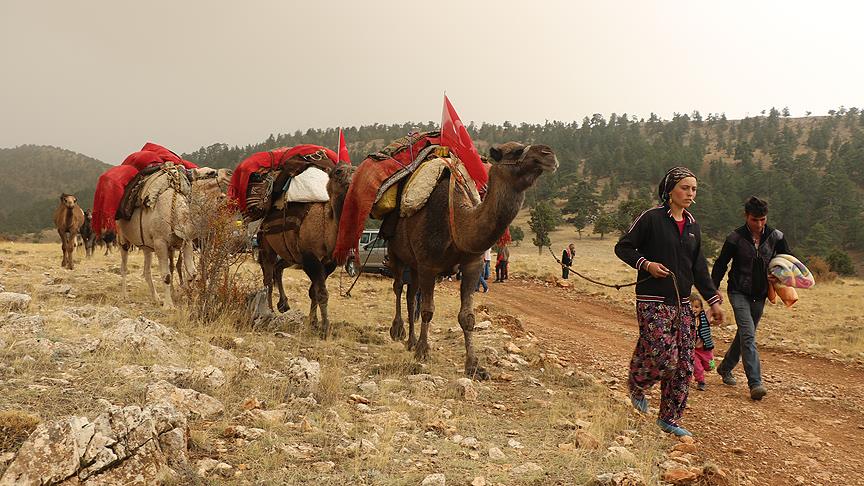
Camel wrestling’s historical significance for Türkiye
The origins of camel wrestling lie in the practicality of nomadic life. Camels, indispensable for trade and transport along the Silk Road, were also a source of entertainment during long journeys.
Competitions served as a way to assess the strength and temperament of these animals while fostering community bonds. As the practice migrated to Anatolia, it evolved into an organized event with its own set of rules and traditions.
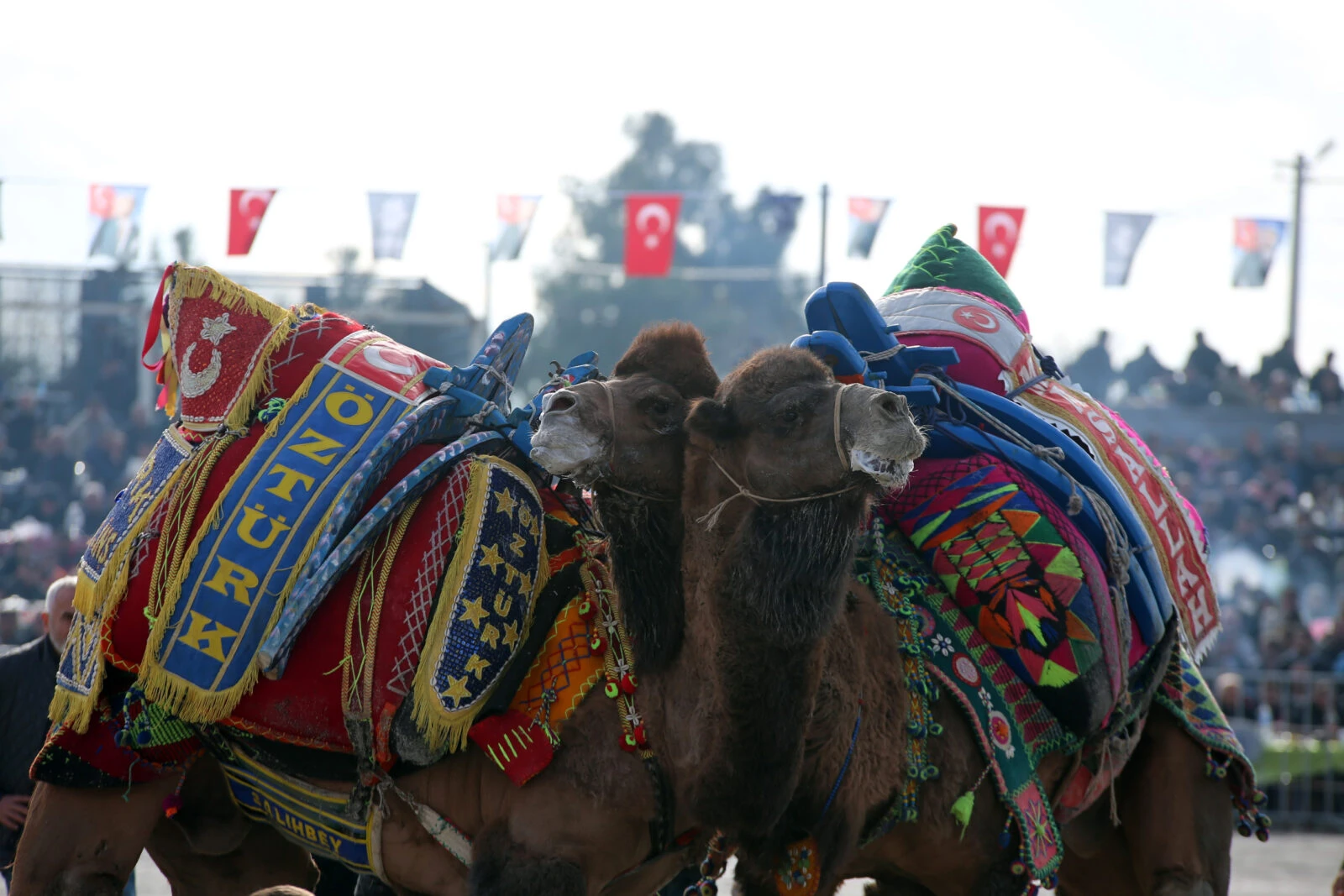
What makes camel wrestling special?
Camel wrestling involves male camels, known as “Tulu,” bred as hybrids of dromedary and Bactrian camels. These animals are trained specifically for wrestling, and their natural aggression peaks during the winter mating season.
Handlers, called “savran,” provide specialized care, including tailored diets and regular exercise, to ensure the camels are in optimal condition for competition. This careful preparation reflects the respect and value placed on the animals by their owners.
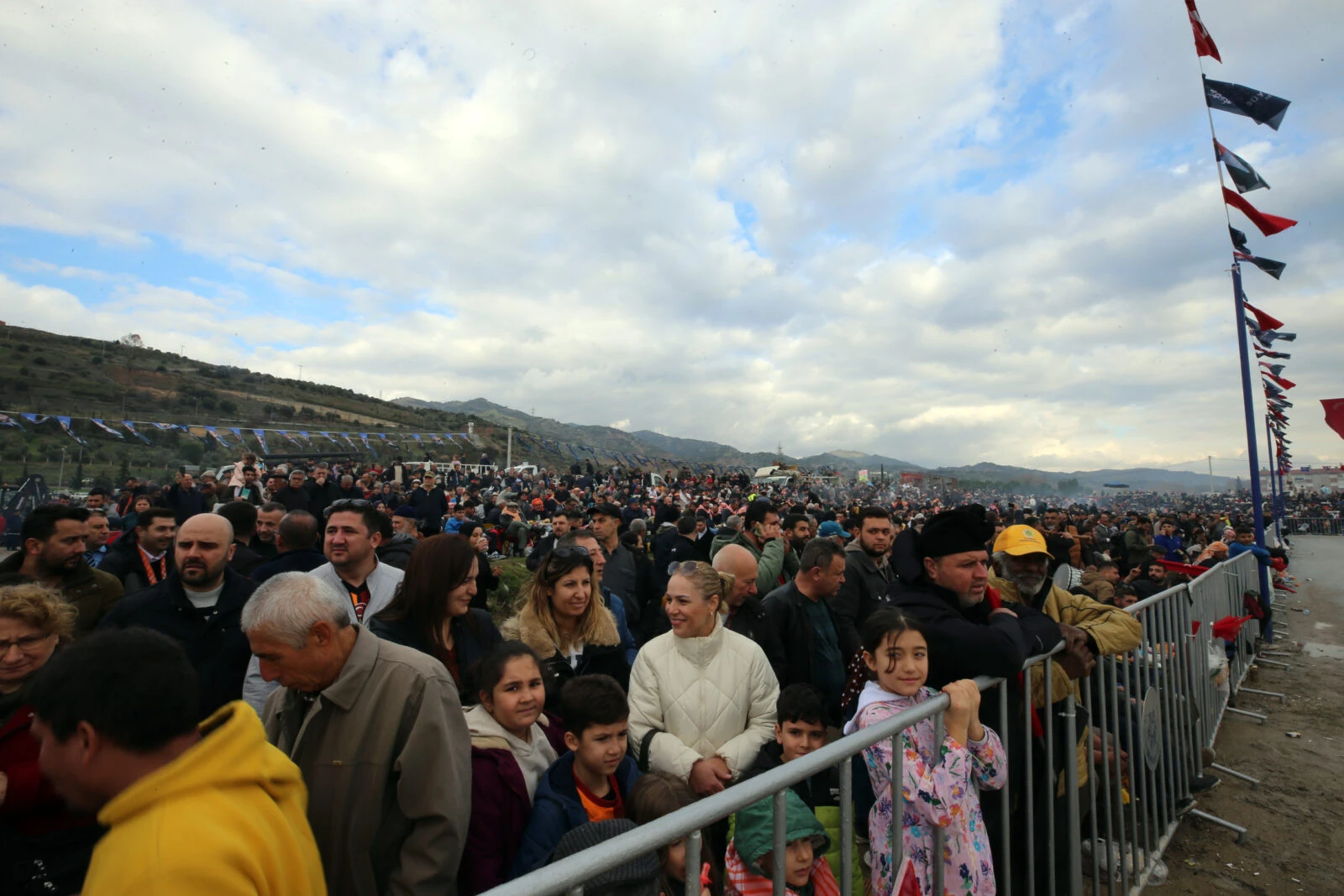
Atmosphere of camel wrestling events in Türkiye
Camel wrestling matches, held between December and March, are busy festivals that transcend the competitions themselves. Communities gather to celebrate their heritage, with activities including:
- Parades: Decorated camels, adorned with embroidered saddles, colorful beads, and bells, parade through towns to the delight of spectators.
- Traditional music and dances: Folk performances and live music amplify the festive mood, drawing people from surrounding regions.
- Cultural fairs: Food stalls offering local delicacies and vendors selling handmade crafts contribute to the carnival-like atmosphere.
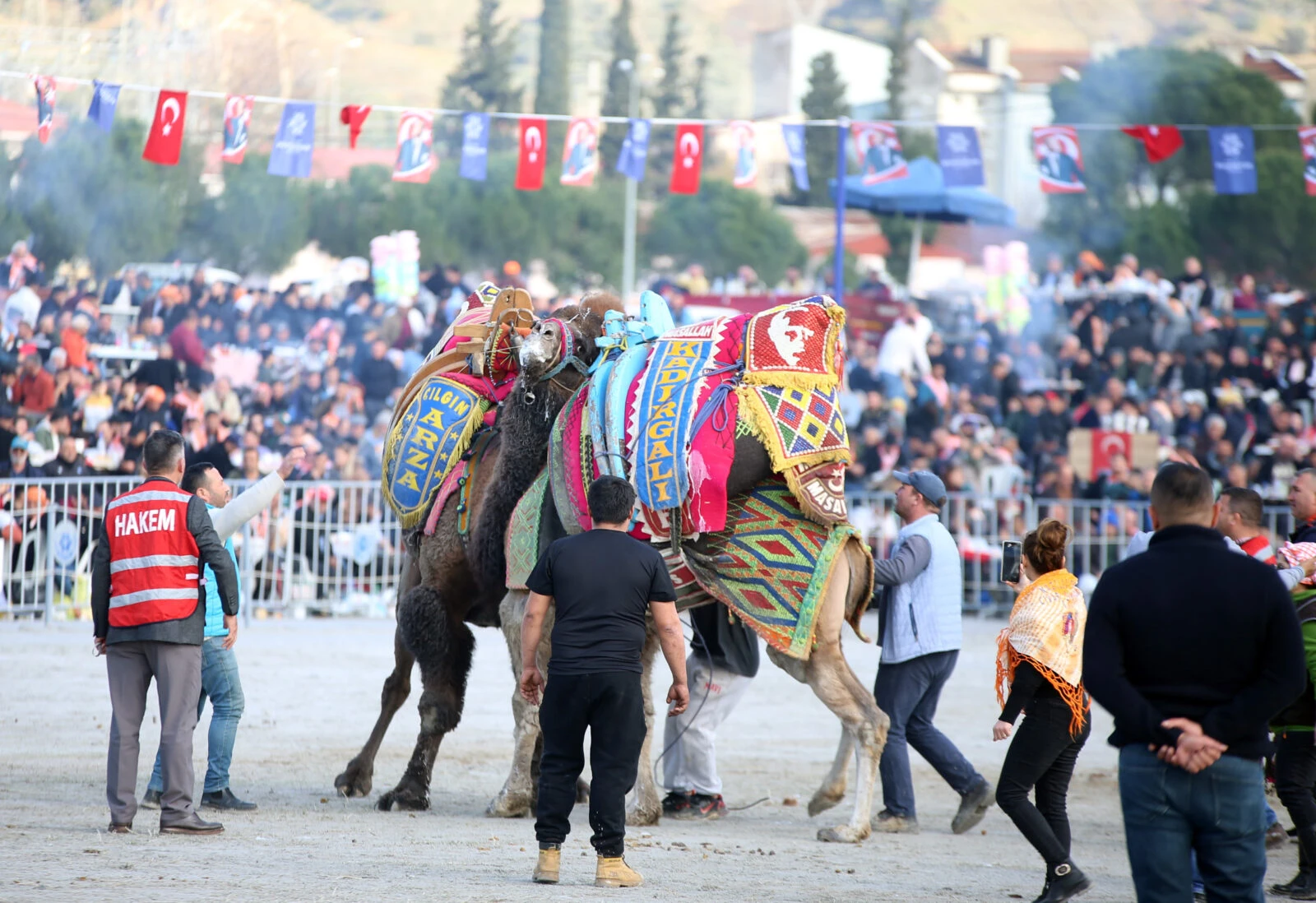
How camel wrestling matches are conducted in Türkiye
The matches take place in arenas under the supervision of referees and handlers to ensure safety. The camels are muzzled to prevent injuries, and the event halts if aggression escalates.
Matches are judged based on techniques such as pushing, tripping, and locking necks, with a camel winning by causing its opponent to retreat, fall, or emit a scream. Victorious camels earn prizes like rugs or monetary rewards, enhancing their owners’ reputations.
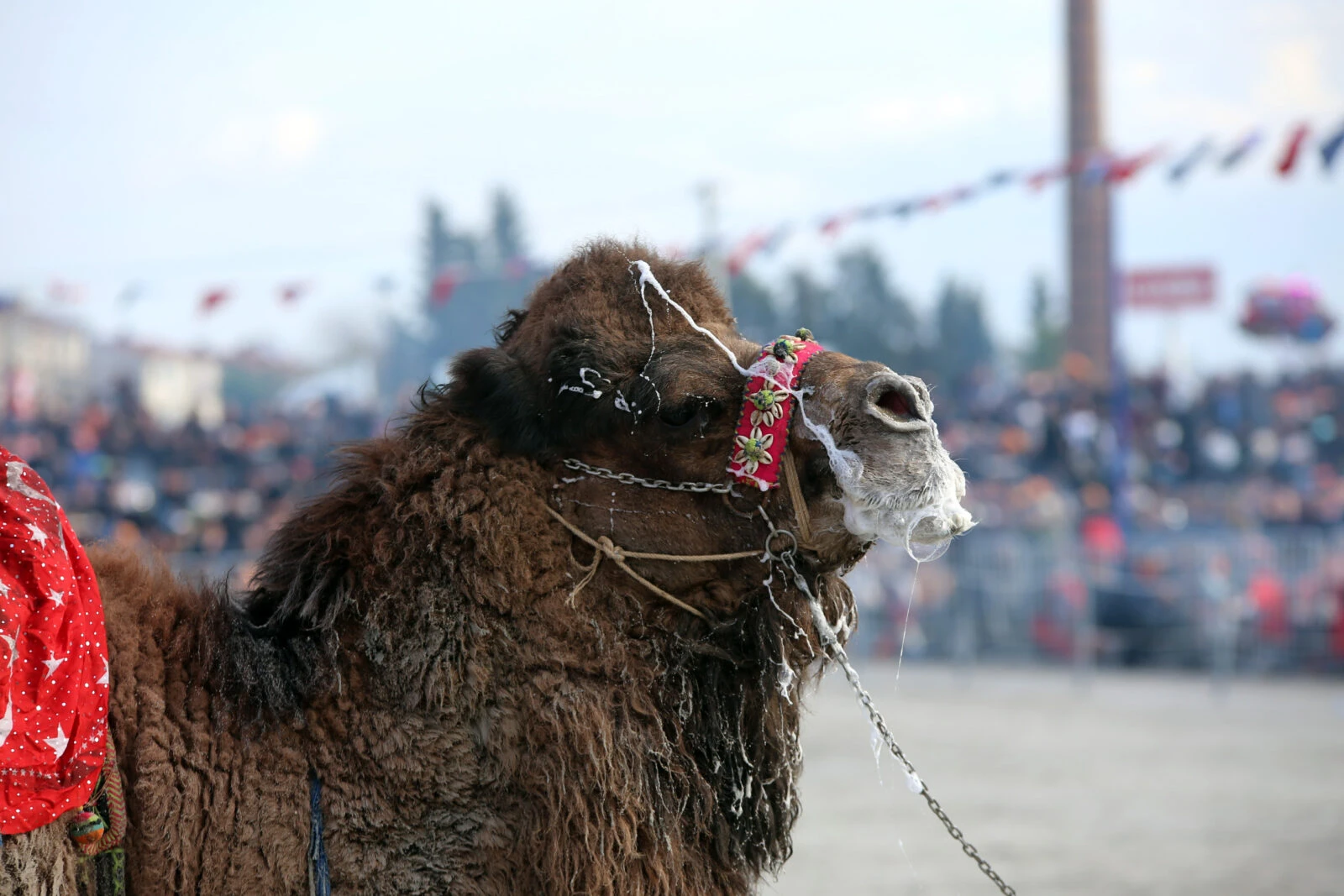
Controversies surrounding camel wrestling in Türkiye
Camel wrestling, a tradition that brings communities together in Turkiye, extends its impact beyond entertainment by funding local projects like schools, mosques, and sports facilities. However, these events are not without criticism.
While organizers assert that camel wrestling is a safe practice for the animals involved, animal rights activists, such as those from the Animal Rights Federation (HAYTAP), argue otherwise.
- Activists claim that camels can suffer injuries or stress during the matches, despite the use of muzzles and the presence of referees to intervene when necessary.
- HAYTAP representatives, including Izmir spokesperson Gulgun Hamamcioglu, have described the events as exploitative, calling for an end to what they see as unnecessary harm inflicted on the animals for human entertainment.
Proponents counter these claims by emphasizing the precautions in place, such as limiting physical harm and closely monitoring the camels during matches.
- They argue that the tradition is a vital part of local culture, providing a sense of identity and continuity for communities.
- Long-time organizers maintain that referees and handlers play a crucial role in ensuring the camels’ safety during the competitions.
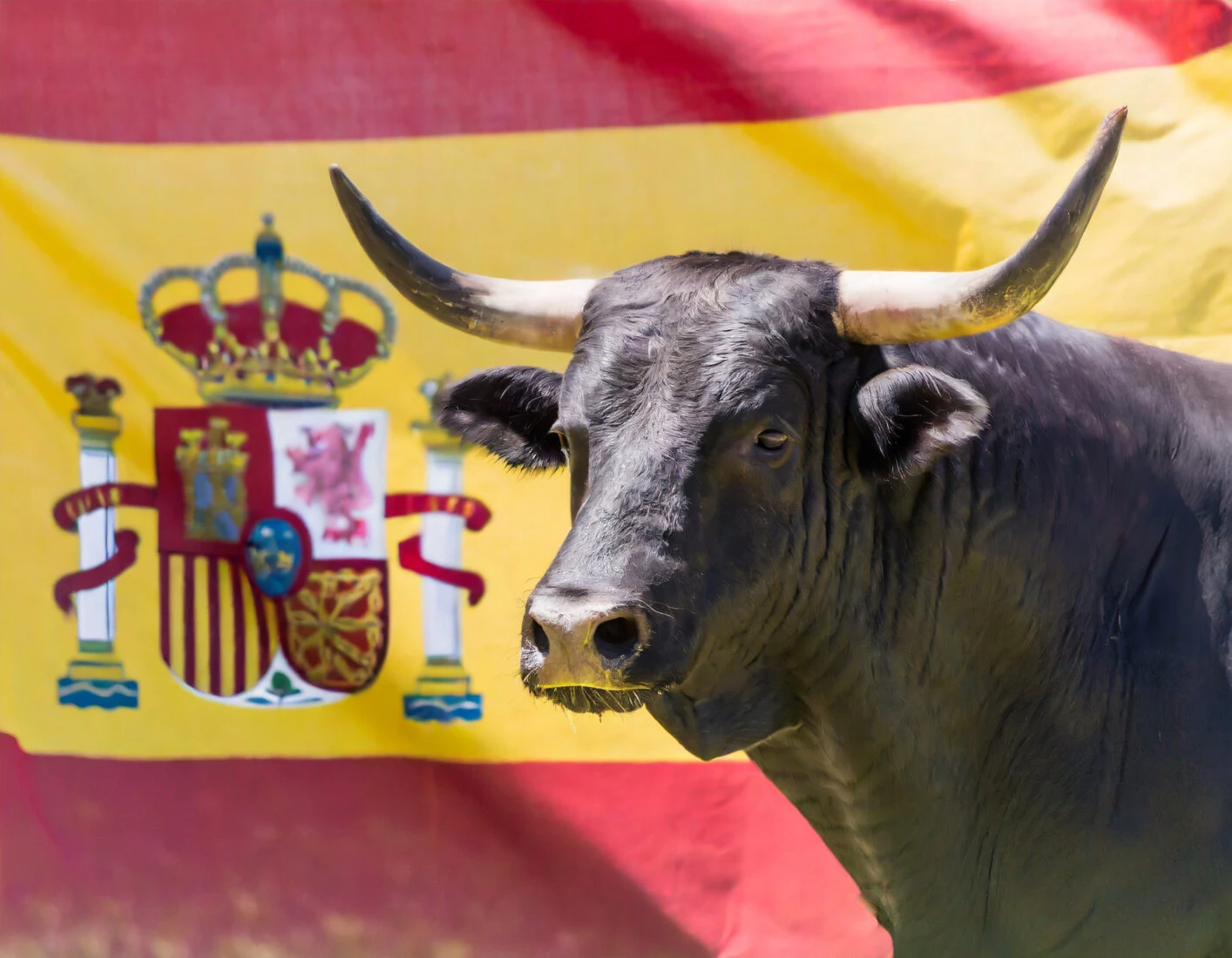
Bullfighting: Dramatic and polarizing Spanish tradition
Bullfighting, or “corrida de toros,” holds a storied place in Spanish culture, with roots tracing back thousands of years. Ancient Roman and Moorish influences shaped the practice, which evolved into its modern form in 18th-century Spain.
Despite its cultural significance, bullfighting remains highly controversial due to concerns over animal welfare.
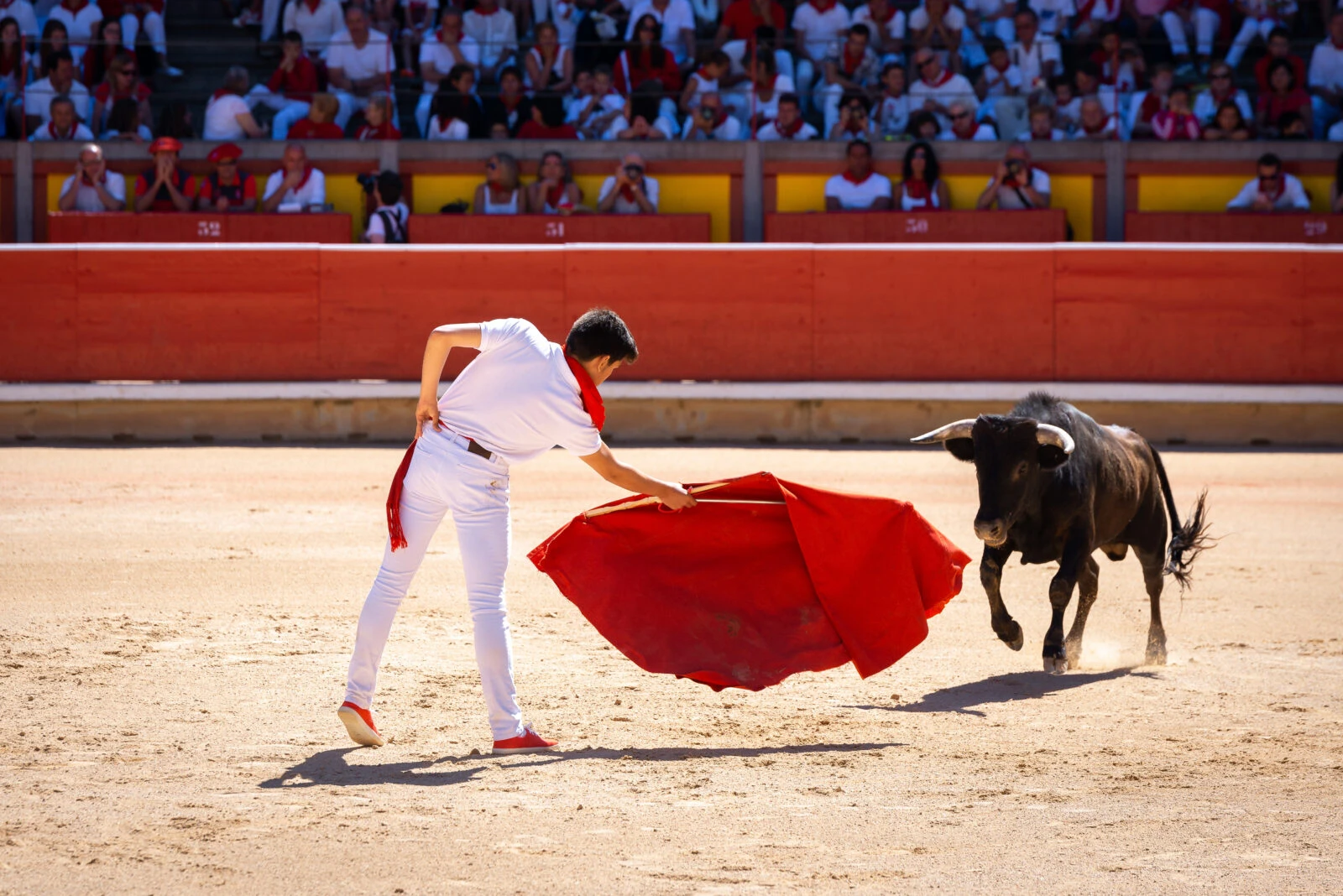
Historical roots of bullfighting in Spain
Bullfighting’s origins can be traced to the Minoan civilization, where bull-leaping contests were depicted in art as early as 2000 B.C.
The practice spread to the Iberian Peninsula through Roman influence, where it merged with Moorish traditions of mounted hunting. By the 18th century, bullfighting transitioned from a noble pastime to a public spectacle, with the development of specific rules and rituals.
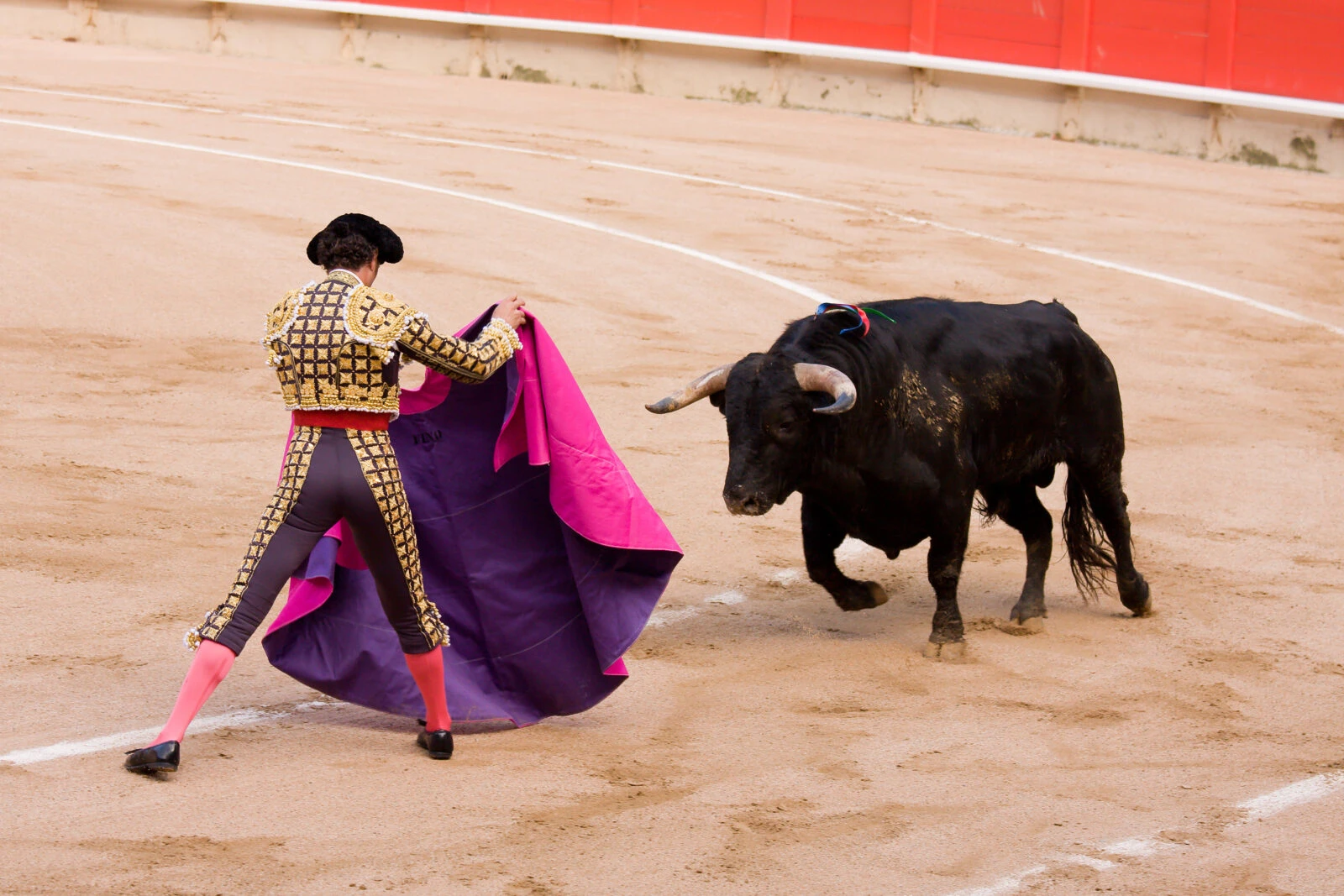
Structure and rituals of bullfighting
A traditional bullfight involves six bulls and 3 matadors, with the event divided into 3 acts, or “tercios”:
- First act (tercio de varas)
- The matador assesses the bull’s behavior using cape maneuvers called “veronicas”
- Picadors on horseback use lances to weaken the bull’s neck muscles, preparing it for the next stages
- Second act (tercio de banderillas)
- Banderilleros place barbed sticks into the bull’s shoulders, further tiring it and lowering its head
- Final act (tercio de muerte)
- The matador performs choreographed maneuvers with a red cape, culminating in the “estocada,” a sword thrust aimed at delivering a swift kill
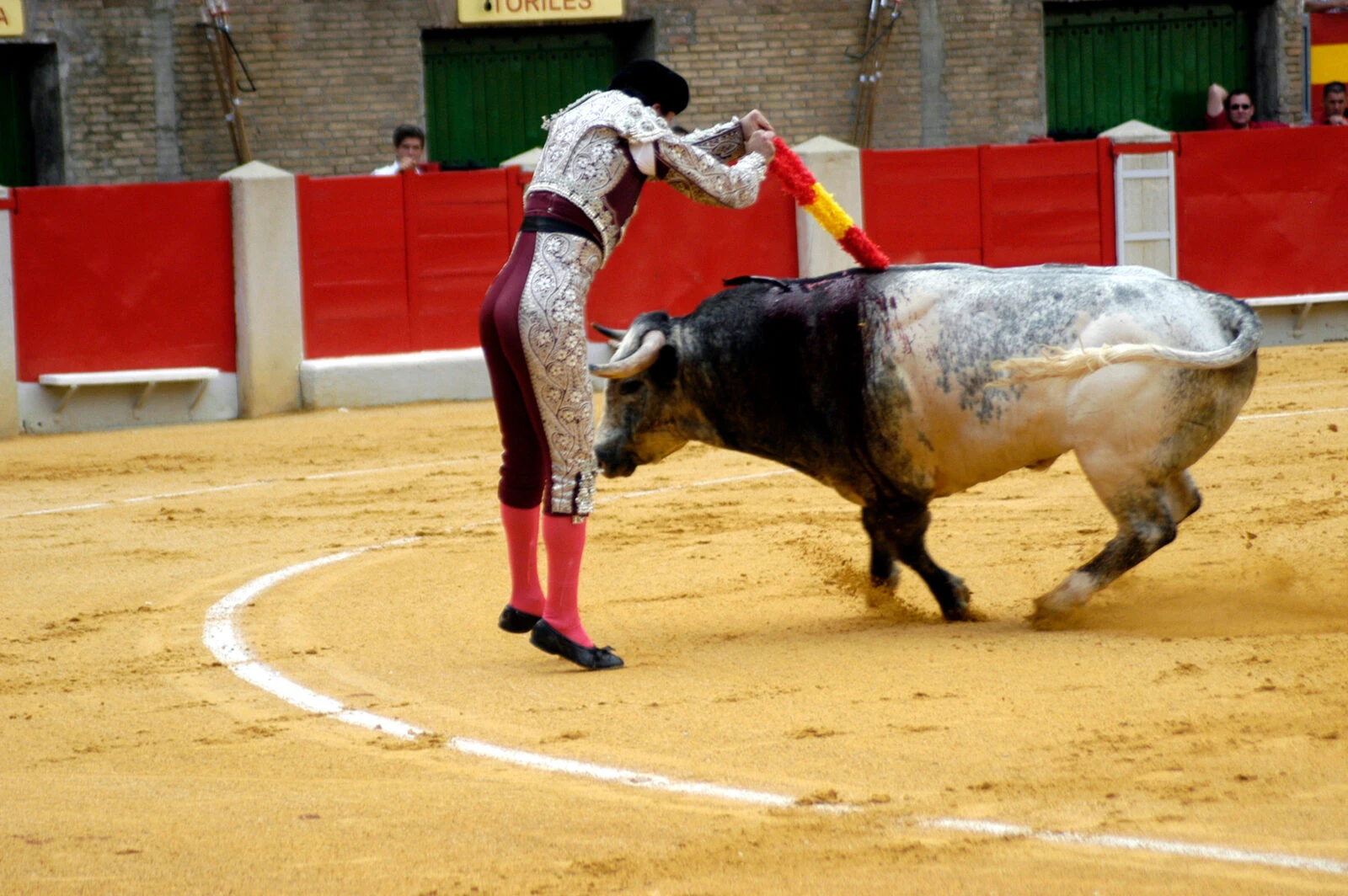
Cultural significance, ethical debates about bullfighting in Spain
Bullfighting, while deeply embedded in Spanish culture, is a highly controversial tradition that sparks debates both within Spain and internationally. Supporters view it as an “art form” that combines skill, bravery, and centuries of history.
However, critics argue that bullfighting involves immense cruelty and is increasingly incompatible with modern ethical standards.
- Number of bulls killed annually: According to animal rights organizations, approximately 250,000 bulls are killed each year in bullfights worldwide.
- Economic reliance on public funding: Bullfighting is often supported through government subsidies at local, regional, national, and even EU levels. Without these taxpayer-funded contributions, the industry might face significant challenges in sustaining itself.
- Regional bans within Spain: Catalonia and the Canary Islands have officially banned bullfighting. Additionally, cities like Calonge, Tossa de Mar, and Vilamacolum have outlawed the practice, reflecting a shift in societal attitudes.
- Global restrictions: Bullfighting remains banned in many countries, including the United Kingdom, Italy, Argentina, and Denmark. Within Spain, certain municipalities have joined this trend, signaling growing resistance to the tradition.
- Economic contributions vs. declining interest: While bullfighting generates significant revenue, including income from breeding programs, ticket sales, and tourism, public interest has waned. Younger generations in Spain increasingly view it as outdated, and attendance figures are steadily declining.
- Public opinion on cruelty: Critics highlight that bulls endure extreme physical and psychological torment. Before facing matadors in the ring, they are subjected to injuries from picadors’ lances, barbed banderillas, and eventually, a fatal sword thrust. This process has drawn widespread condemnation from animal welfare advocates.
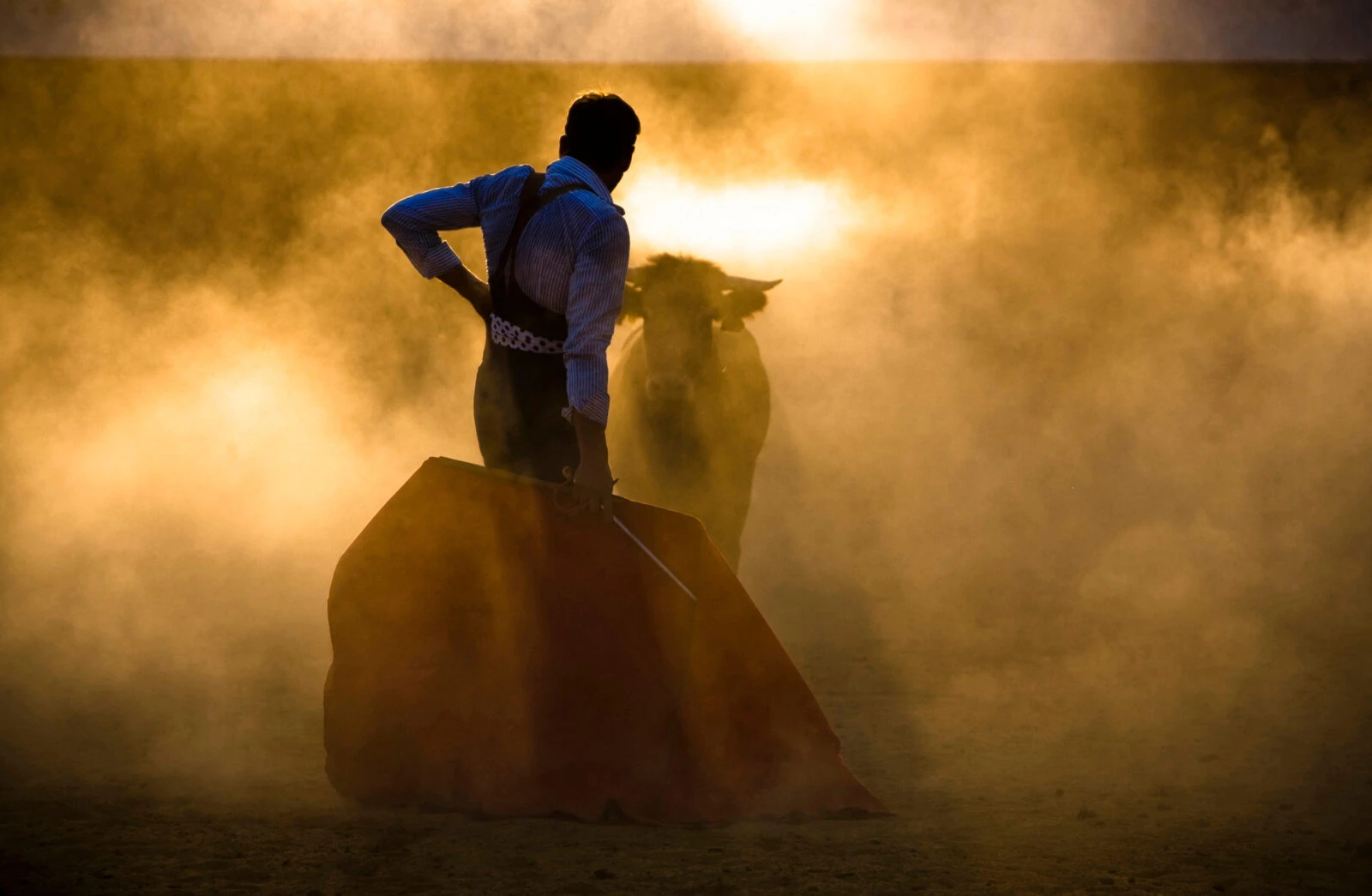
Despite these criticisms, proponents continue to defend bullfighting, citing its economic contributions, the preservation of rural bull-breeding traditions, and its role in Spanish cultural festivals.
Both camel wrestling and bullfighting face pressure to adapt as global awareness of animal rights increases.
While camel wrestling in Türkiye prioritizes community and cultural celebration, debates about its stress on animals persist. In Spain, bullfighting continues to polarize society, with its future hinging on the balance between tradition and ethical considerations.



